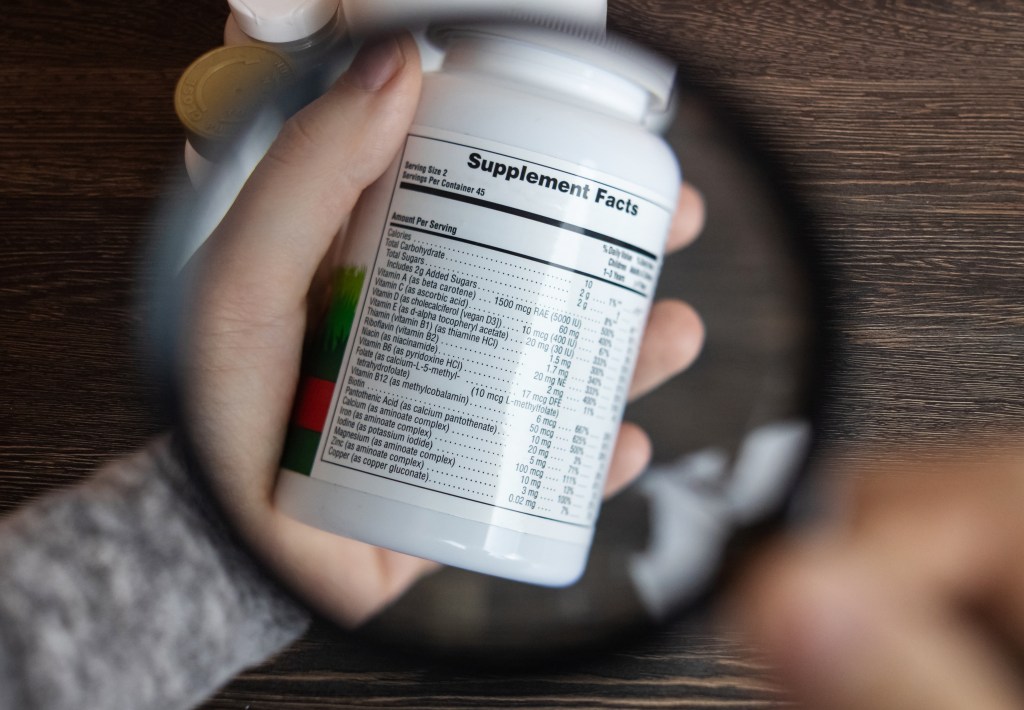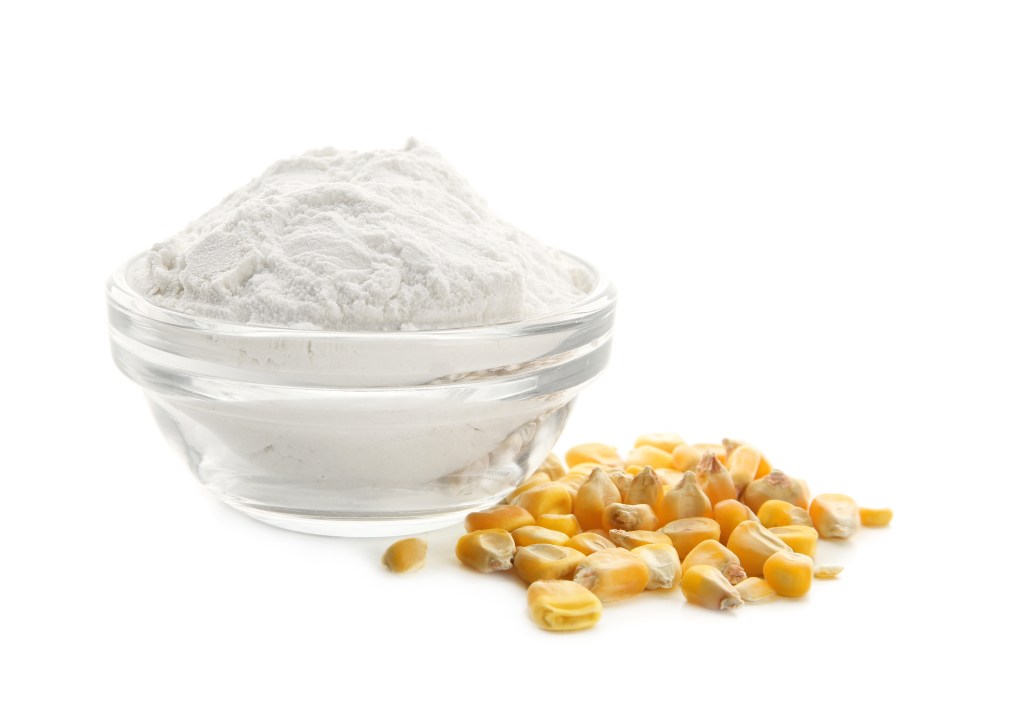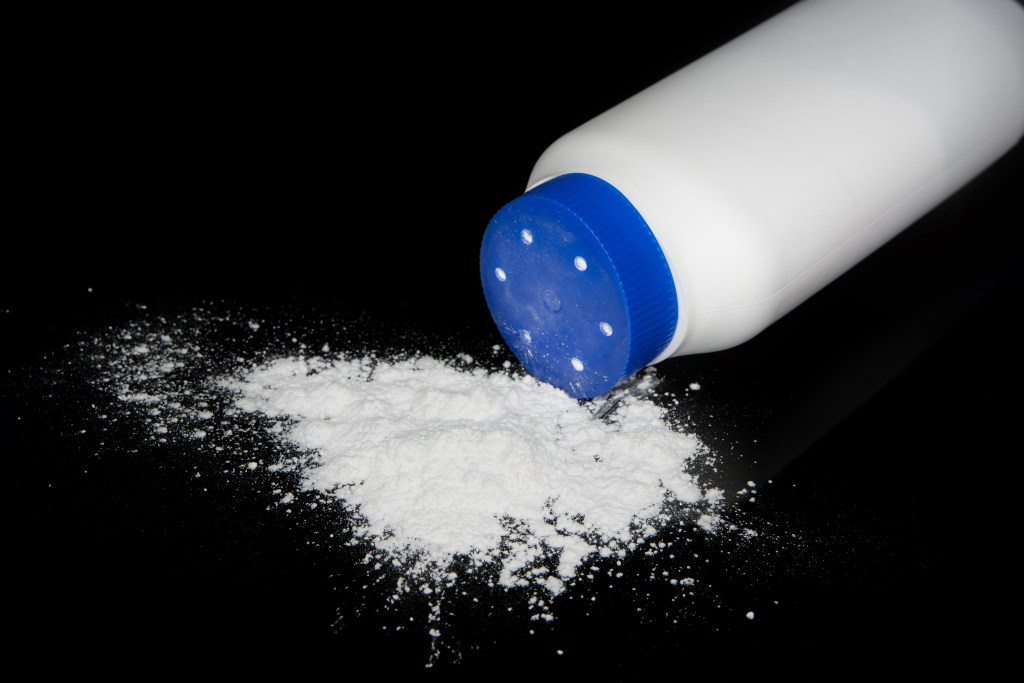At a glance
Many supplements and beauty products contain hidden toxic ingredients that can disrupt hormones, irritate the skin, or burden the liver over time. Learning to identify these additives can help you choose cleaner, more effective options that support long-term health and wellness.
Knowing what’s in your supplements and cosmetic products is crucial to not only achieving your health and wellness goals but also reducing your exposure to potentially harmful and even toxic ingredients.
Unfortunately, many products on the market are loaded with fillers, additives, and low-quality synthetic ingredients that aren’t effective and can do more harm than good.
Understanding which toxic chemicals to avoid can help you make smart choices for your health and beauty routine while protecting you from dangerous substances.
Why ingredients matter
Many supplement and cosmetic companies use fillers, additives, and low-quality ingredients to boost their bottom line. These substances are added to enhance the look, taste, smell, and shelf life of products but can be detrimental to your health.
Understanding why these ingredients are used and their potential risks can help you make more informed choices.
Product appearance
Various additives and artificial ingredients are frequently used to improve the appearance of dietary supplements and personal care products.
Synthetic dyes are regularly used to enhance the visual appeal of supplements. However, these chemicals can cause various health issues, including digestive problems, dysregulated immune responses, and hyperactivity in children.
This is particularly problematic, as research published in Environmental Health Perspectives found that artificial food colorings are regularly found in vitamin supplements marketed for children.1
Similarly, many personal care products contain questionable cosmetic ingredients to enhance their appearance or texture but can cause health problems.
Certain preservatives, such as parabens, can mimic estrogen in the body, potentially disrupting hormonal balance linked to reproductive problems and birth defects. Artificial fragrances often used in shampoo, nail polish, lip balm, and lotion are also endocrine disruptors and may cause reproductive and developmental issues.
Extended shelf life
Despite initiatives such as the Toxic Free Cosmetics Act and efforts by the Environmental Working Group (EWG) to regulate harmful substances, many supplement and cosmetics manufacturers use synthetic preservatives to extend their product’s shelf life, making them more profitable.
For example, sodium benzoate and propyl gallate are preservatives commonly found in many supplements. These compounds have been linked to significant health risks, including an increased likelihood of cancer, heart disease, and neurological disorders.
Certain chemical preservatives in cosmetic products are formaldehyde-releasing agents that can increase cancer risk and may trigger skin issues and respiratory problems.

Cost reduction
Synthetic vitamins, low-quality ingredients, and cheap fillers are often used to cut production costs and boost profit margins. These cost-saving measures can compromise the effectiveness and nutritional value of supplements.
Fillers such as maltodextrin increase the volume of supplements without adding significant cost, allowing manufacturers to produce more units for less money. However, maltodextrin can disrupt metabolic balance and cause blood sugar spikes, making it especially problematic for individuals with diabetes.
A report published by the American Diabetes Association (ADA) found that more than a third of diabetic patients are taking at least one dietary supplement. This underscores the importance of being cautious about supplement ingredients and choosing products prioritizing quality and effectiveness over cost.2
In addition, many beauty products contain cheap ingredients classified as endocrine-disrupting chemicals, meaning they can interfere with reproductive system function.
A study published in Cosmetics highlights the potential health risks of endocrine disruptors and summarizes, “Long-term exposure to these substances, especially during the embryonic period, is believed to contribute to the development of various diseases, including fertility disorders, certain cancers, neurological disorders, obesity, and reproductive problems.”3

30 ingredients to avoid
By reading ingredient labels and knowing what’s inside a product, you can avoid potentially harmful chemicals and opt for safer alternatives that better support your health and well-being.
This awareness empowers you to select options that align with your health goals, ensuring that you get the most benefit from your supplement regimen and beauty routine without unnecessary risks.
Let’s look at 30 ingredients to avoid when choosing supplements and beauty products.
1. High-fructose corn syrup
High-fructose corn syrup (HFCS) is a sweetener made from corn starch, commonly used in dietary supplements and processed foods to enhance flavor and extend shelf life.
Typically derived from bioengineered corn, HFCS is significantly cheaper and sweeter than regular sugar. However, HFCS poses well-documented health risks and has been linked to obesity, insulin resistance, diabetes, and non-alcoholic fatty liver disease.
HSCF is often used in meal replacement shakes and liquid herbal supplements, as well as multivitamins in gummy and liquid form.
2. Maltodextrin
Maltodextrin is produced by chemically altering starches, resulting in a white, powdery substance that’s easily digestible and has a slightly sweet taste.
Because of its taste and texture, this cheap filler is typically used to bulk out pills and capsules, making you believe you are getting more active ingredients than you are. This practice is misleading, as the potency and effectiveness of the supplement might be lower than expected due to the presence of maltodextrin.
Maltodextrin is also frequently found in sports drinks, protein powders, and meal replacement shakes, as it provides a quick sugar-boost.
The use of maltodextrin in supplements is more than questionable, as it can trigger blood sugar spikes, which can be particularly concerning for individuals with diabetes and has been found to cause gastrointestinal issues such as bloating and abdominal gas.

3. Genetically modified organisms (GMOs)
Many supplements contain unnecessary fillers and additives made from genetically modified organisms (GMOs), such as corn, soy, and canola.
However, the long-term health impacts of GMOs are unknown, and emerging evidence suggests potential adverse effects, including allergic reactions, reproductive harm, and liver problems.
In addition, there are environmental concerns related to the cultivation of GM crops, including their negative impact on biodiversity and the potential for cross-contamination with non-GM plants.
4. Sugar
The inclusion of sugar to make supplements more palatable poses several health concerns.
Sugar, which includes sucrose, fructose, HFCS, and sweeteners such as honey and maple syrup, can cause significant blood sugar fluctuations, trigger cravings, and contribute to obesity.
Using sugar in supplements is counterproductive as supplements are typically marketed as health-enhancing and intended to support well-being.
5. Dextrose
Dextrose, a type of processed sugar typically derived from GMO corn or wheat, is commonly added to supplements to enhance flavor and extend shelf life.
It’s a cheap ingredient that can lead to weight gain, rapid breathing, excessive thirst, diarrhea, and fluid retention, which may result in swelling and fluid buildup in the lungs.
In addition to being found in certain multivitamins, dextrose is a common ingredient in pre- and post-workout shakes, protein powders, and meal replacement shakes.

6. Cornstarch
Cornstarch is a common ingredient in supplements, often used as a thickening agent, filler, or to improve texture. However, it’s a high-glycemic carbohydrate, which means cornstarch can trigger blood sugar imbalances linked to weight gain, metabolic imbalances, and diabetes.
Additionally, sensitive individuals may experience immune system reactions to cornstarch, leading to gastrointestinal issues and skin problems.
7. Titanium dioxide
Titanium dioxide is an inorganic additive frequently used as a colorant and opacifier. It provides a bright, white finish and helps make the colors of other ingredients more vivid.
It’s often used in paints, coatings, adhesives, and, unfortunately, can also be found in many dietary supplements.
While the U.S. Environmental Protection Agency (EPA) hasn’t declared titanium unsafe, the European Union has banned this chemical due to its immunotoxic, pro-inflammatory, and potentially neurotoxicity properties.
This ban was based on research that linked exposure to titanium dioxide to DNA damage, breast cancer, chromosomal abnormalities, and adverse effects on the immune and nervous systems.
8. Artificial sweeteners
Artificial sweeteners are commonly used in supplements to provide sweetness without added calories. However, their use is associated with various health concerns.
For example, aspartame, found in many sugar-free products and supplements, has been linked to adverse neurological effects and reproductive toxicity.
Sucralose, a chlorinated sugar substitute around 600 times sweeter than table sugar, raises concerns about its impact on gut health, metabolic balance, and the potential for carcinogenicity.
In addition to those, other potentially harmful artificial sweeteners, such as saccharin, neotame, and acesulfame-K, are often found in powdered supplements, particularly in protein powders and weight-loss products.

9. Ultra-processed seed oils
Ultra-refined seed oils such as canola, soybean, corn, cottonseed, and sunflower oil are added to various supplements as emulsifiers and to enhance their texture and palatability.
It’s important to understand that these oils are typically heavily processed and extracted using harsh chemicals such as hexane, which has been linked to respiratory issues, skin reactions, headaches, and neurological problems.
In addition, adding ultra-processed oils to supplements can further undermine their intended health benefits, as they contain pro-inflammatory omega-6 fatty acids. This explains why these refined seed oils are linked to heart disease, arthritis, and Crohn’s disease.
10. Farmed fish oil
Farmed fish oil, also referred to as aquaculture fish oil, is derived from fish raised in industrial environments such as tank farms, ponds, or ocean enclosures rather than being caught in the wild.
Farmed fish contain higher levels of harmful compounds, including pesticides, dioxins, polychlorinated biphenyls (PCBs), and antibiotics, than wild fish.
Dioxins, a known carcinogen, and PCBs pose significant health risks, including cancer, endocrine disruption, and various chronic diseases. These toxic compounds are called forever chemicals, as they persist in the environment and accumulate in living organisms.
Additionally, farmed fish can contain lower levels of beneficial omega-3 fatty acids than their wild counterparts, reducing the effectiveness of fish oil supplements and potentially diminishing their health benefits.
11. Soybean oil
Soybean oil is a low-cost additive often used in vitamin D and fish oil supplements and can be found in multivitamins, especially those marketed as vegetarian or vegan.
This highly refined oil has been linked to several health issues, including gut inflammation, obesity, and diabetes.
It has also been suggested that soybean oil can negatively affect the gut microbiome and promote the growth of harmful bacteria, including Escherichia coli, associated with inflammatory bowel disease (IBD).

12. Gluten
Gluten is a group of structural proteins found in wheat, rye, and barley. It’s added to supplements as a binding agent to enhance texture and improve the stability of multivitamins, nutritional bars, and powder formulations.
Individuals with celiac disease may not always be aware of gluten in supplements, and even small amounts can trigger serious health issues. These include intestinal damage, gut inflammation, and impaired nutrient absorption.
13. Synthetic vitamins
More than 98 percent of dietary supplements are made with synthetic vitamins, which raises significant concerns.
Synthetic nutrients are made from chemical compounds in a lab and not whole food sources. They often have lower bioavailability than their natural counterparts, meaning the body may not absorb and utilize them as effectively.
Additionally, synthetic vitamins don’t provide the same balance of cofactors found in naturally derived nutrients, which ironically can lead to nutrient imbalances and deficiencies.
Synthetic nutrients also carry health risks, including potential adverse reactions or interactions with medications, and the long-term effects aren’t always well understood.
Lastly, synthetic supplements are at increased risk of containing contaminants, including petroleum, hexane, and heavy metals not found in natural sources.
Here are commonly used synthetic vitamins to avoid:
Retinol palmitate
Retinyl palmitate is a synthetic form of vitamin A that’s toxic in high doses. This synthetic nutrient is particularly problematic for pregnant women as it can affect the developing fetus, increasing the risk of congenital disabilities.
Ergocalciferol
Synthetic vitamin D, also known as vitamin D2 or ergocalciferol, is less potent and bioavailable than natural vitamin D3, making it considerably less effective for treating vitamin D deficiency.
Additionally, high doses of synthetic vitamin D2 have raised concerns about a potential increased risk of heart disease and pancreatic cancer.

Dl-alpha-tocopherol
Dl-alpha-tocopherol is a synthetic form of vitamin E that can interfere with blood clotting, increases the risk of excessive bleeding, and has been linked to premature death.
Menadione
Also known as vitamin K3, menadione is a synthetic form of vitamin K. In high doses, it can damage the liver and increase the risk of hemolytic anemia, a blood disorder marked by impaired oxygen transport and the destruction of red blood cells.
Pyridoxine hydrochloride
Synthetic vitamin B6, known as pyridoxine hydrochloride, has been linked to neurotoxicity and sensory problems when consumed in high doses or over extended periods.
Folic acid
Although this synthetic form of folate, or vitamin B9, can help prevent neural tube defects, folic acid carries potential risks.
Excessive intake of folic acid can mask vitamin B12 deficiency, which, if left untreated, may lead to severe nerve damage. Additionally, high doses of folic acid have been linked to an increased risk of cancer and cognitive decline, particularly in individuals with a genetic predisposition to these conditions.
Cyanocobalamin
The synthetic form of vitamin B12, cyanocobalamin, isn’t as bioavailable as its natural counterpart and may even increase the risk of vitamin B12 deficiency.
Cyanocobalamin contains a cyanide molecule, which can interfere with vitamin B12 metabolism and potentially result in insufficient levels of circulating vitamin B12.
Ascorbic acid
Ascorbic acid, a synthetic form of vitamin C, is notably less effective than its natural counterpart as it lacks the diverse range of essential cofactors found in natural sources such as citrus fruits or acerola cherries.

14. Synthetic food coloring
Synthetic food colors are artificial dyes or pigments often derived from petroleum or coal tar. They’re designed to enhance the visual appeal of products by giving pharmaceutical drugs, supplements, and cosmetic products vibrant colors.
Unlike natural food colors from plant, animal, or mineral sources, synthetic colors are created through chemical processes. Although widely used, they’re linked to various adverse health effects, including allergic reactions, neurological problems, and behavioral issues in children.
15. Synthetic preservatives
Artificial preservatives such as sodium benzoate, sorbic acid, butylated hydroxyanisole (BHA), and butylated hydroxytoluene (BTH) are cheaper than natural ones. They’re often added to low-quality supplements to prevent spoilage and oxidation.
While these chemicals effectively extend the shelf life of supplements, they pose several health risks. Synthetic preservatives can cause breathing difficulties, increase the risk of cancer, and can contribute to heart disease by weakening heart tissues.
Omega-3 and fish oil supplements, probiotics, as well as multivitamins, especially in gummy form, are commonly formulated with synthetic preservatives to extend their shelf life and maintain their texture.
16. Artificial flavoring
Artificial flavoring compounds are often used to enhance the taste of supplements, particularly those in chewable, gummy, or liquid form.
These artificial flavors aren’t derived from natural sources but are created in a lab to mimic natural flavors. While they improve the palatability of supplements, they’re associated with several health risks.
These risks include an increased likelihood of cancer, genetic damage, and various allergic reactions, including anaphylaxis, which can be life-threatening.
It can be challenging to identify artificial flavorings on product labels as they’re typically disguised with chemical names, including vanillin, ethyl maltol, isoamyl acetate, acetoin, or diacetyl, to name just a few examples.

17. Sulfates
Sulfates such as sodium laureth sulfate and ammonium laureth sulfate are commonly found in personal care products such as shampoos, body washes, and facial cleansers to create foaming and lather.
However, sulfates are harsh chemicals that strip natural oils from the skin and hair. This can lead to dryness, irritation, and potential allergic reactions.
Prolonged exposure to sulfates has been found to disrupt the skin’s natural barrier, leaving it exposed to environmental pollutants and pathogens. Over time, this can contribute to skin sensitivity and exacerbate existing skin conditions, such as eczema or psoriasis.
18. Parabens
Parabens are a group of synthetic chemicals widely used as preservatives in cosmetics and personal care products to extend their shelf life by inhibiting the growth of bacteria and mold.
Common products containing parabens include lotions, shampoos, soaps, deodorants, and makeup items, including lip balm and face powders.
Parabens are known to disrupt endocrine function by mimicking estrogen, which can lead to hormonal imbalances and potentially increase the risk of breast cancer. In addition to these concerns, paraben exposure may be linked to congenital disabilities and infertility.
19. Silicones
Silicones, frequently used in hair and skincare products for their smoothing and conditioning effects, can build up over time and potentially cause issues.
In hair products, silicones can weigh down the hair, making it appear dull and lifeless, and may reduce the effectiveness of other nourishing ingredients.
In skincare items, silicones can create a barrier that prevents moisture from penetrating the skin, leading to dryness. These potentially harmful compounds can also clog pores, thereby exacerbating or contributing to acne and other skin concerns.
While silicones can give the impression of smoothing benefits, their long-term effects may hinder overall skin and hair health, and it’s recommended to opt for silicone-free alternatives that allow better moisture absorption without the risk of buildup.

20. Phthalates
Similarly to parabens, phthalates are endocrine disruptors that can interfere with hormonal balance, growth and development, immune system functions, and reproductive health.
They’re cost-effective and widely used as solvents and stabilizers, helping to keep ingredients combined in products such as perfumes, hair sprays, nail varnishes, deodorants, and shampoos.
Phthalates have been linked to several health concerns, including an increased risk of cancer, respiratory issues, and allergies. Additionally, they can contribute to fertility problems, early puberty, low birth weight, obesity, diabetes, and behavioral disorders in children.
21. Petroleum
Petroleum-based ingredients, such as mineral oil and petrolatum, also known as petroleum jelly, are commonly used in cosmetic and personal haircare products. They create a barrier that locks in moisture, giving the illusion of hydrated skin and hair.
However, petroleum can prevent the skin and hair from truly absorbing moisture, leading to potential long-term dryness and other issues. Additionally, these ingredients may clog pores, contributing to acne and skin breakouts.
Despite their widespread use, petroleum-based products can mask underlying issues rather than address them, making them poor choices to promote long-term skin and hair health.
22. Dyes
Dyes are commonly added to personal care products to enhance their visual appeal and create a more attractive appearance.
However, these synthetic dyes can pose significant health risks, particularly for sensitive individuals. Allergic reactions and skin irritations are common side effects, potentially leading to redness, itching, and rashes.
In addition, certain dyes have been linked to endocrine disruption, which can interfere with hormonal balance and potentially impact reproductive health. Additionally, there is evidence suggesting that some synthetic dyes may be carcinogenic, increasing the risk of cancer over long-term exposure.

23. Magnesium silicate
Magnesium silicate, widely known as talcum powder, is commonly used in various cosmetic consumer products, including baby powders, face powders, blushes, and eyeshadows.
It’s also a key ingredient in many supplements, especially those packaged in tablets, as it acts as a glidant to improve the powder flow during manufacturing and prevent the tablets from sticking together.
However, the use of talc isn’t without controversy and potential health risks.
Talc can be contaminated with asbestos fibers, a known carcinogen that poses significant risks to respiratory health and can cause cancer when inhaled. Even asbestos-free, cosmetic-grade talc has been shown to be potentially toxic and carcinogenic.
24. Shellac/pharmaceutical glaze
Shellac is a natural resin secreted by the female lac beetle and is frequently used to coat capsules and tablets. This coating improves the appearance and shelf-life of supplements, masks unpleasant tastes and odors, and controls the release of the active ingredients.
However, despite its widespread use and natural origin, shellac has potential health concerns. Some sensitive individuals can have significant allergic reactions to shellac, resulting in symptoms such as skin rashes, itching, and respiratory problems.
Additionally, shellac can be difficult for the digestive system to break down and absorb, potentially leading to gastrointestinal discomfort in sensitive individuals.
25. Carrageenan
Carrageenan is a texturizer extracted from red seaweed. It’s often used to enhance the texture and stability of liquid supplements and meal replacement shakes.
Despite its functional benefits, consumption of carrageenan has been found to cause digestive problems such as bloating, diarrhea, and stomach discomfort.
There is also evidence that carrageenan can disrupt the protective mucous layer of the gut, increasing the risk of increased intestinal permeability. This can cause stomach swelling and discomfort and may allow the influx of toxins, pathogens, and allergens into the body, potentially triggering an immune response and contributing to chronic inflammation.

26. Potassium Sorbate
Potassium sorbate is a chemical compound widely used as a preservative in personal care items to inhibit the growth of mold and bacteria. It’s also used in liquid supplements, protein powders, and meal replacement products.
Potassium sorbate can cause skin, eye, and respiratory irritations, and prolonged exposure may result in allergic reactions such as rashes or itching.
Additionally, potassium sorbate can exacerbate skin conditions such as eczema and dermatitis, making it a concern for those with sensitive or compromised skin.
27. Ascorbyl palmitate
Ascorbyl palmitate is a synthetic compound formed by combining ascorbic acid with a fatty acid. It’s typically used in moisturizers, serums, and anti-aging creams due to its proposed antioxidant properties.
However, ascorbyl palmitate can actually cause oxidative damage to the skin when exposed to ultraviolet B (UVB) radiation, generating oxidized lipid metabolites that are toxic to skin cells.
28. Lead
Lead is a toxic heavy metal that can be found in lead-based paints, contaminated soil, and plumbing systems.
Unfortunately, lead can also be present in personal care products and dietary supplements, often as a contaminant rather than an intentional ingredient.
Lead can enter personal care products such as lipsticks, face powders, and hair dyes through contaminated raw materials or during manufacturing. In supplements, lead contamination is typically due to contaminated ingredients or improper production practices.
Chronic exposure to lead can cause anemia, high blood pressure, and kidney damage. In children, even low doses of lead exposure can result in developmental impairments, lower IQ, and behavioral issues.
Long-term lead exposure is linked to irreversible neurological and cognitive deficits, and severe cases can lead to neurological damage or even death. Pregnant women exposed to lead face risks of premature birth and developmental issues for their infants.

29. Calcium carbonate
Calcium carbonate is an inorganic salt frequently used in cosmetics and personal care products as an abrasive, absorbent, and bulking agent. It’s commonly found in toothpaste, facial powders, and foundations.
Skin and eye contact with calcium carbonate powder can cause irritation, and inhalation may irritate the respiratory tract and trigger allergic reactions.
It’s a cheap ingredient often added to low-quality multivitamins as a source of calcium. However, calcium carbonate is known to cause gastrointestinal issues and has been linked to an increased risk of kidney stones and arterial calcification.
30. Magnesium oxide
Magnesium oxide is an inorganic compound used in various cosmetics and personal care products, including face powders and foundations, due to its properties as an absorbent and bulking agent.
However, it can cause adverse effects. Skin and eye contact with magnesium oxide powder can lead to irritation, and inhaling the dust may adversely affect respiratory tract function.
Magnesium oxide is also a common ingredient in dietary supplements. However, this elemental form of magnesium is poorly absorbed, less effective, and more likely to trigger gastrointestinal issues, including diarrhea, stomach cramps, and nausea.
Key takeaways
- Many supplements and beauty products contain toxic ingredients linked to allergic reactions, hormonal imbalances, cognitive effects, and skin or digestive discomfort.
- Fillers, synthetic additives, and artificial preservatives are often used to cut costs but can compromise product safety and effectiveness.
- Understanding which ingredients to avoid helps protect long-term health and support informed choices.
- Choosing natural, minimally processed products promotes wellness while reducing exposure to harmful substances.
Sources
- https://www.ncbi.nlm.nih.gov/pmc/articles/PMC2957945/ ?
- https://diabetesjournals.org/spectrum/article/22/4/206/2405/Dietary-Supplements-for-Diabetes-An-Evaluation-of ?
- https://www.mdpi.com/2079-9284/10/6/160 ?


















